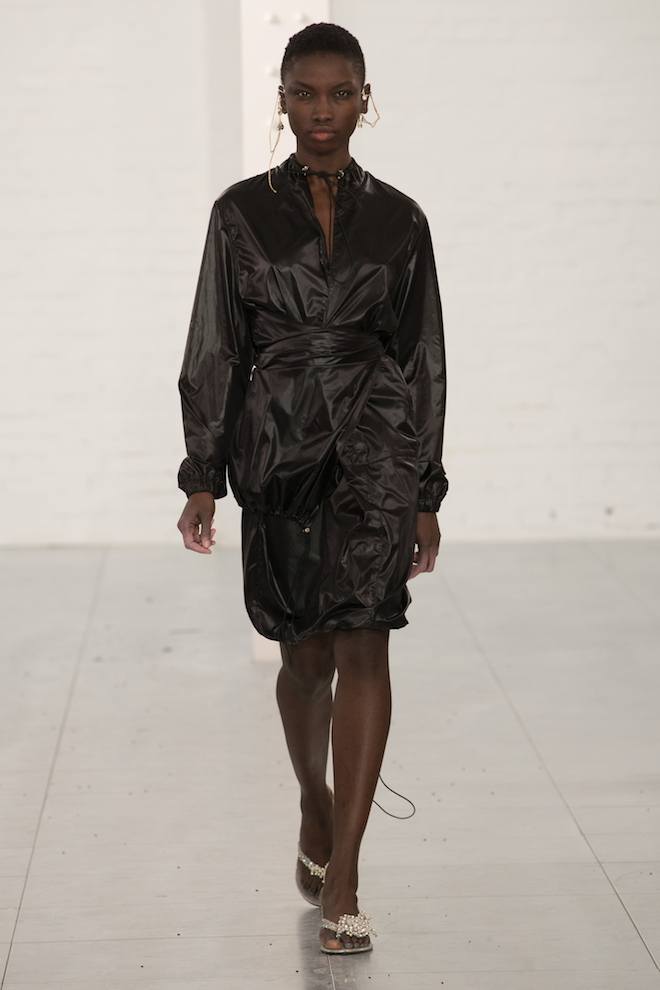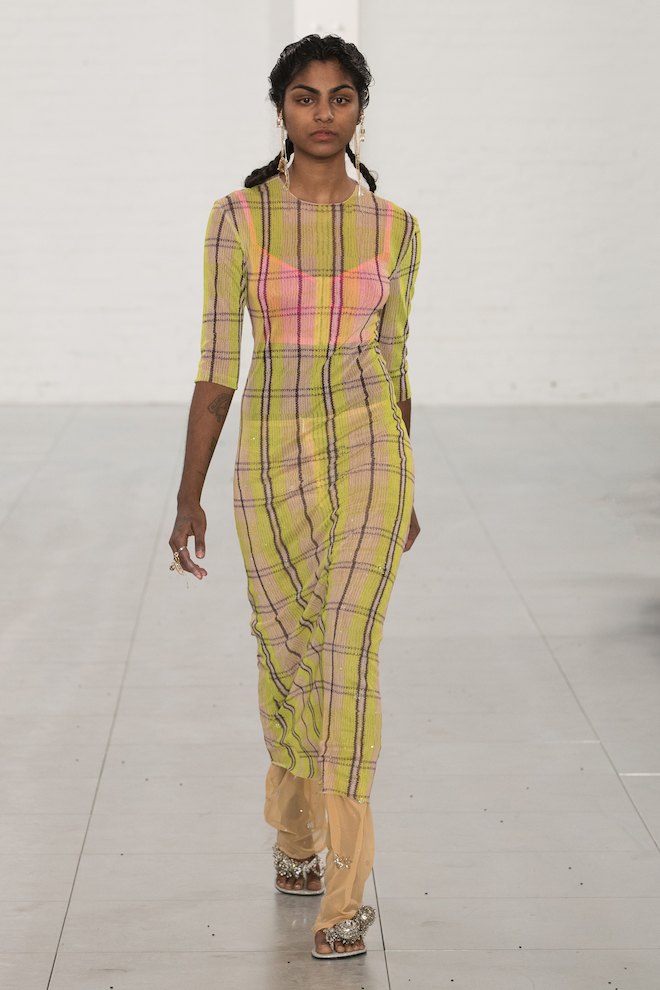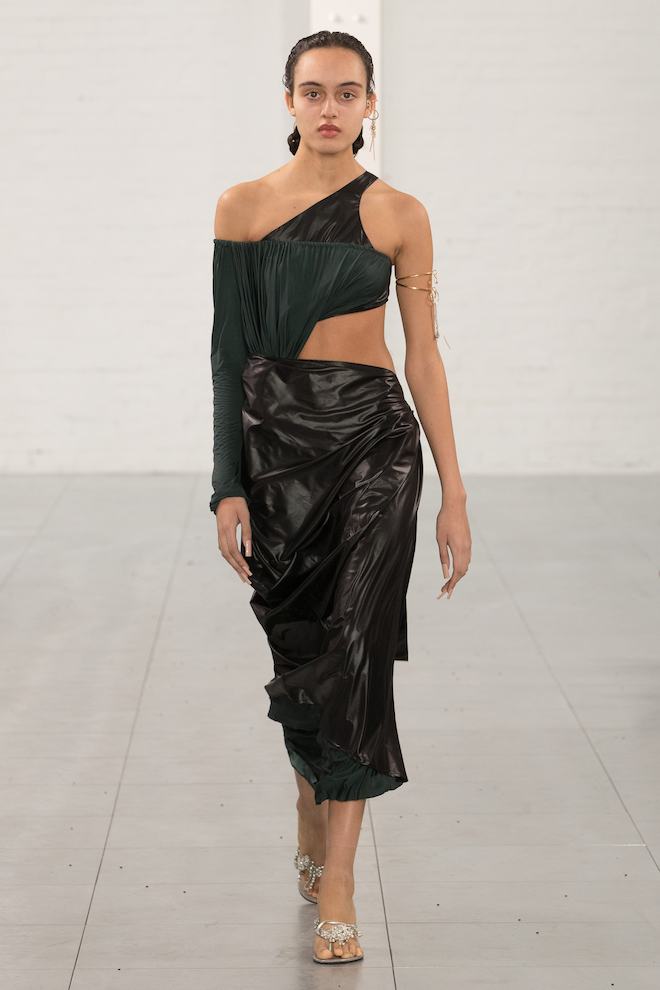What does it mean to be British? This is one of the biggest questions facing British people in the aftermath of the Brexit vote. What does Britishness look like? It’s a difficult one to answer given the influx of immigrants, cultures, and customs in British society over the last forty years. It’s something Supriya Lele confronts with her work.
Supriya is a British fashion designer with Indian heritage. Her work is influenced by her British identity and Indian cultural heritage. The way she works with drapery recalls the sari. The colours she works with refer to her own background, growing up as a goth in the British Midlands. Her work is inspired by architecture and sculpture, which she believes are integral facets to fashion design. Her work caught the attention of Fashion East, Lulu Kennedy’s incubator program for emerging talents. With three seasons at London Fashion Week showing as part of Fashion East, the British Fashion Council awarded Supriya NEWGEN sponsorship. This September, she will debut her standalone show at London Fashion Week. Twin caught up with her to discuss identity, launching a brand and “growing up as a goth in the British Midlands.”
When did you know you were meant to be a fashion designer?
I wouldn’t necessarily say I always knew I was meant to be a fashion designer, I began by studying architecture, and then subsequently wanted to study sculpture before last minute changing to my undergraduate degree in fashion…I think these three areas are quite linked. I was always really interested in fashion and it has always been an important part of my life, and this has been a very natural process.

Surprise LeLe AW18 | © Chris Yates
There are also parts of your work which refer to your childhood “growing up as a goth in the British Midlands”. For you, is storytelling an integral part of your designs?
Haha, yes the “goth,” aspect or subversive aspect to my work is important. I have been exploring my cultural identity since I completed my Masters at the Royal College of Art- and that involves exploring different memories, or parts of my family history which have informed my personal viewpoint and design handwriting; I think storytelling is a big part of that.
Your work features contrast: masculinity and femininity; your Indian heritage and British cultural identity; lo-fi fabrics and the air of luxury– is your work defined by contrast or the balance between the contrasting elements?
I always enjoy the tension between high and low and I like to play with that in my work. I would probably say that the balance between the contrasting elements is what I enjoy- finding that middle space or exploring that tension is what is exciting.

Surprise LeLe AW18 | © Chris Yates
It was reported that your first presentation with Fashion East came at a time when you hadn’t yet worked out how to sell the collection. Is this true?
My first presentation with Fashion East was when I showed parts of my Masters Collection from the Royal College of Art- most of this had been created on the course without sales in mind; so it was more that the actual collection was not ready for sales. It was more an aim to present my ideas and vision in that context, and introduce myself to the industry.
You worked with Fashion East for three seasons, what was the best advice you received?
I received a lot of good advice from Fashion East so this is a tough question! I think it was not to worry too much and to be confident in my own abilities.
You’ve been afforded NEWGEN sponsorship for the upcoming season. How does it feel to join the ranks alongside your peers Matty Bovan, Bianca Saunders, as well as previous winners such as J.W. Anderson and Simone Rocha?
It feels really exciting to have my own slot on schedule at LFW, I am really looking forward to it. NEWGEN has an amazing list of alumni, but also the current designers are so strong it’s really great to be a part of it!
What is next for the brand?
To keep pushing my vision forward and to grow my business and brand organically with the support I have.


 PREVIOUS
PREVIOUS

 Twitter
Twitter
 Tumblr
Tumblr
 YouTube
YouTube
 Facebook
Facebook
 Instagram
Instagram
